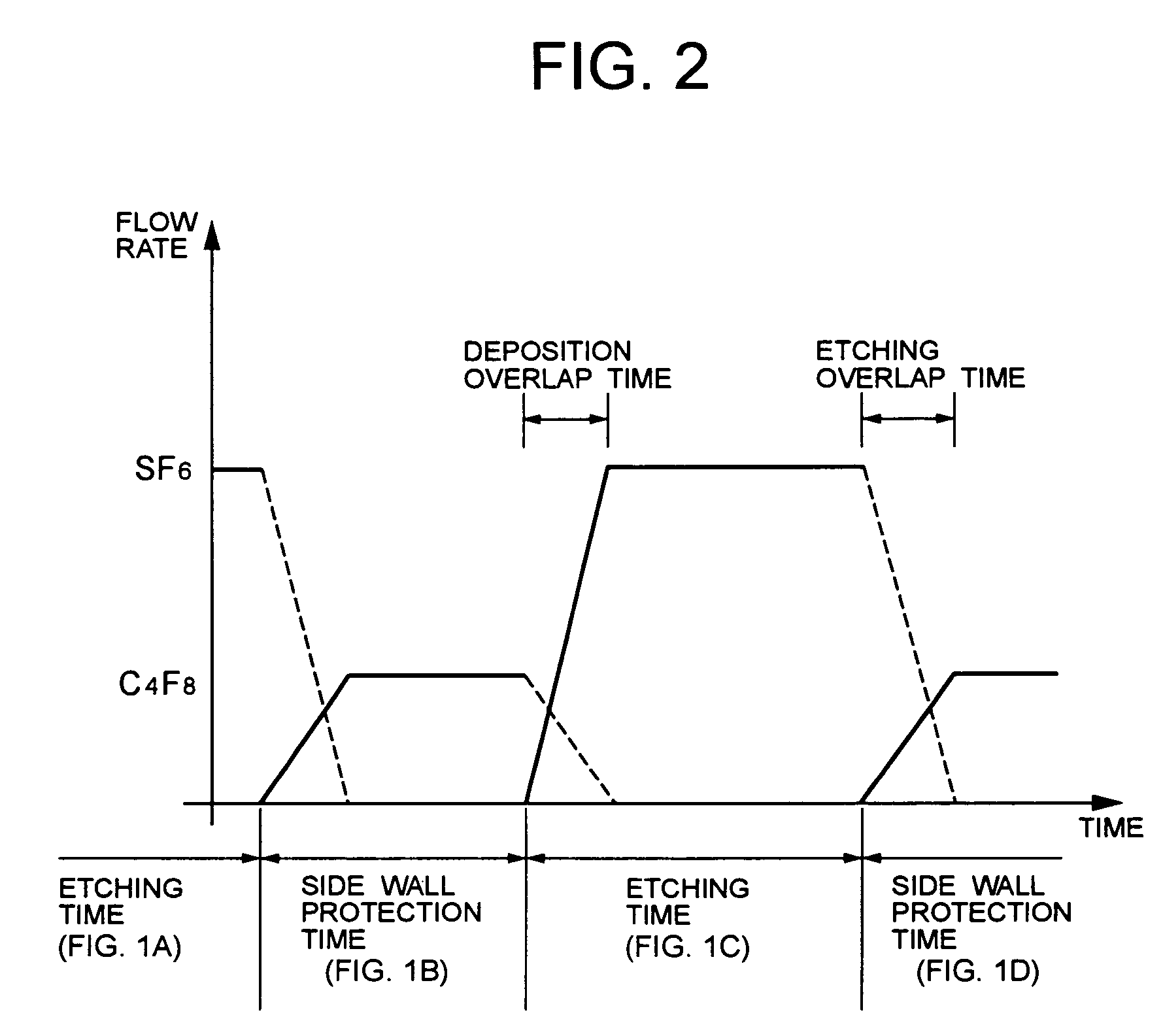Method of fabricating semiconductor device including forming a protective layer and removing after etching a trench
a technology of etching and trench bottom, which is applied in the manufacture of microstructural devices, microstructures, electrical equipment, etc., can solve the problems of difficult to obtain sufficient ions with the etched surface, difficult to remove the etching obstruction layer at the trench bottom, and inapplicability of the fine etching technology used in recent years to fabricate semiconductors. achieve the effect of improving the detachment of the polymer film
- Summary
- Abstract
- Description
- Claims
- Application Information
AI Technical Summary
Benefits of technology
Problems solved by technology
Method used
Image
Examples
first embodiment
[0039]The method of fabricating a MEMS device according to the first embodiment of the present invention is characterized in that, directly after the silicon trench etching, heating is performed within a temperature range of 300 to 500° C. followed by oxide plasma ashing to remove the fluorocarbon plasma polymer film deposited on the trench side walls.
[0040][A] Trench Etching
[0041]FIG. 1A to FIG. 1D are a series of diagrams to illustrate a sequence of the silicon trench etching of the first embodiment of the present invention. In the first embodiment (FIG. 1A to FIG. 1D), trench etching of silicon 1 is performed by alternately repeating a silicon etching step (FIGS. 1A and 1C) and a deposition step (FIG. 1B and FIG. 1D). The silicon (Si-sub) 1 is a semiconductor substrate (wafer). The silicon etching step includes forming a photoresist etching mask 2 on the silicon 1, and etching the silicon with F radicals (F*) and F+ ions generated by SF6 gas plasma. The deposition step includes d...
experiment 1
Deposition of Polymer Film
[0053]One silicon sample was prepared by cleaving a silicon wafer. The silicon sample was a 10 mm×10 mm piece. The ICP-plasma deposition step was conducted such that C4F8 plasma was irradiated for one minute onto the surface of the silicon wafer to deposit a fluorocarbon polymer film onto the silicon wafer surface. Thus, the fluorocarbon polymer film deposited on the pattern side walls was reproduced in simulated fashion.
experiment 2
Heating
[0054]Thereafter, the cleaved silicon sample on which the fluorocarbon polymer film had been deposited was introduced into a chamber of an ultrahigh vacuum (degree of vacuum is 1×10−9 Torr) thermal desorption spectroscopy (TDS) apparatus that was equipped with a quadrupole mass spectroscopy (QMS) apparatus. The silicon sample was heated to one of four maximum temperatures from room temperature (20° C.) at a rising temperature speed of 1° C. / sec, by irradiating the silicon sample with infrared rays from the outside. The four maximum temperatures were 180° C., 340° C., 500° C. and 700° C. It should be noted that the single sample was used in five different ways. First, the sample was not heated, i.e., it was maintained at 20° C., and the surface of this sample was investigated. The investigation (i.e., observation of the sample surface after heating) will be described in the Experiment 3. Second, the same sample was heated to 180° C., and the sample surface was investigated. Th...
PUM
 Login to View More
Login to View More Abstract
Description
Claims
Application Information
 Login to View More
Login to View More - R&D
- Intellectual Property
- Life Sciences
- Materials
- Tech Scout
- Unparalleled Data Quality
- Higher Quality Content
- 60% Fewer Hallucinations
Browse by: Latest US Patents, China's latest patents, Technical Efficacy Thesaurus, Application Domain, Technology Topic, Popular Technical Reports.
© 2025 PatSnap. All rights reserved.Legal|Privacy policy|Modern Slavery Act Transparency Statement|Sitemap|About US| Contact US: help@patsnap.com



